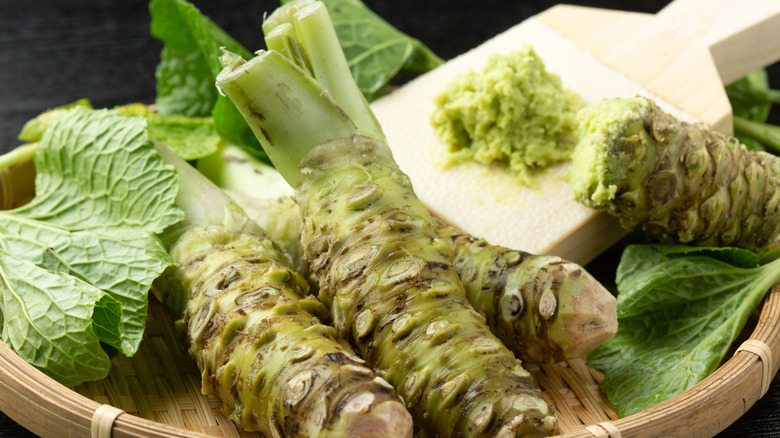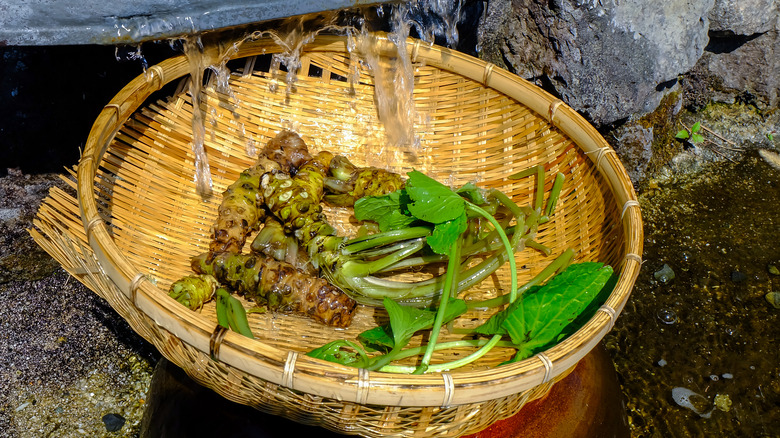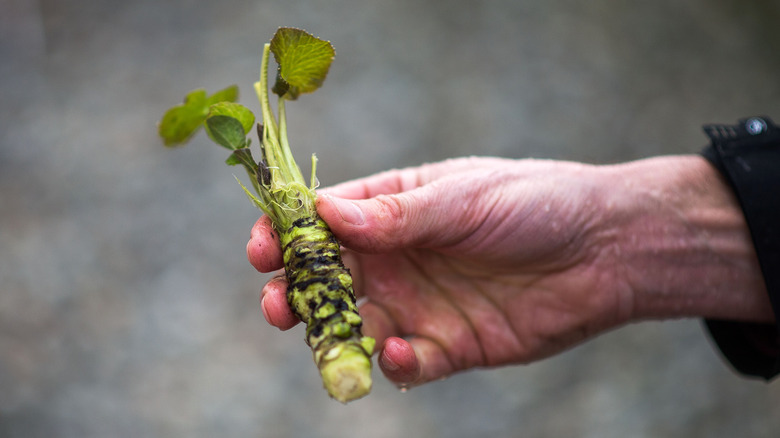A Wasabi Shortage May Be Coming, But Probably Not For The Reason You Think
Nor much appears to have changed since Japanese farmers first took up the challenge to begin cultivating the wasabi plant hundreds of years ago. Wasabi farms are still small; so small that in 2009, The Tokyo Foundation for Policy Research said the largest wasabi farm was just 0.6 hectares, or 1.4 acres, in size. (Compare that to the U.S., where the average farm is 444 acres, according to the FDA.)
To this day, wasabi farms — and the knowledge needed to maintain them — are handed down from generation to generation, because it takes skill not just to build and maintain a wasabi farm, but also to keep the spring water that feeds the plants clean. All these efforts are aimed at keeping the sensitive wasabia japonica disease-free so it can grow and be harvested when the time comes. As wasabi farmer Takahiro Ozawa put it, "Every wasabi farm has its own cultivation method that's been handed down in the family, so each family grows wasabi using a very different method."
Keeping it in the family may have been ideal a few generations ago, but today, the existence of these wasabi farms are being threatened not just by external factors like climate change — which upset the balance needed by these delicate plants — but by a lack of interest on the part of the younger generation to work as their parents and grandparents did generations before (via The New York Times).
Climate change is threatening Japan's venerable wasabi crop
56-year old Mitsuyasu Asada is just one in a growing number of traditional wasabi farmers who fear he will be the last to look after the rhizome farm just as his father and grandfather did before him. The New York Times says Asada has two adult daughters, and neither have displayed any interest in taking over the family business. Asada is under no illusion about the future of his farm, saying: "If no one will take it over, it [the farming] will end."
Shizuoka Prefecture may already be feeling the combined effects of climate change and a lack of interest. Today, the region produces less than half of the wasabi that it once did, and The Tokyo Foundation for Policy Research says that "more and more wasabi fields in the mountains are being abandoned and left to ruin." The loss of these fields is felt by entrepreneurs like Hiroyuki Mochizuki, who heads a company that uses natural wasabi to make various food products. He said: "I have a sense of crisis. In order to protect Japanese food culture, it is important to protect wasabi."
Growers need outside assistance
In order for Japan's wasabi traditions to survive, growers may have to seek outside help, which may be a challenge, because the tightly-knit wasabi farming clans appear reluctant to do just that. Haruhiko Sugiyama does not come from a traditional wasabi-growing family, but he had wanted to be a wasabi farmer. In order to realize his dream, he worked for another wasabi grower for 12 years — without taking any time off — before he finally managed to lease wasabi paddies from a grower whose son was not interested in following in his father's footsteps (via The New York Times).
"In a way it is a closed society, made up of people who have grown wasabi for generations. If I were not recognized by the association, they would not help me or allow me to grow on favorable land," Sugiyama says. Given that Japan's society is ageing to what The Diplomat calls "an unprecedented degree," it will be difficult to see a path forward for Japan's traditional wasabi-growing industry without the help and interest of "outsiders" like Sugiyama to lead the way.


